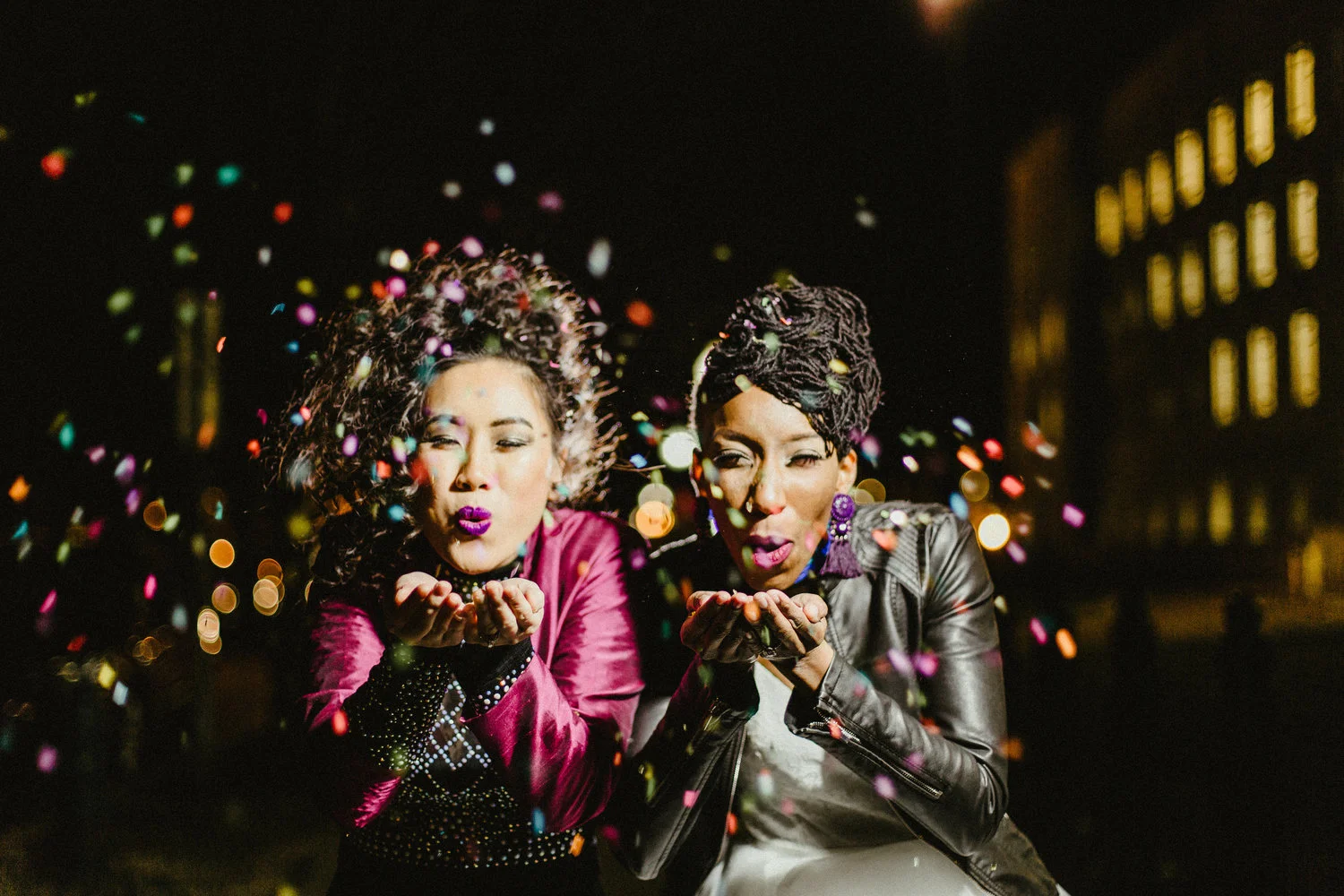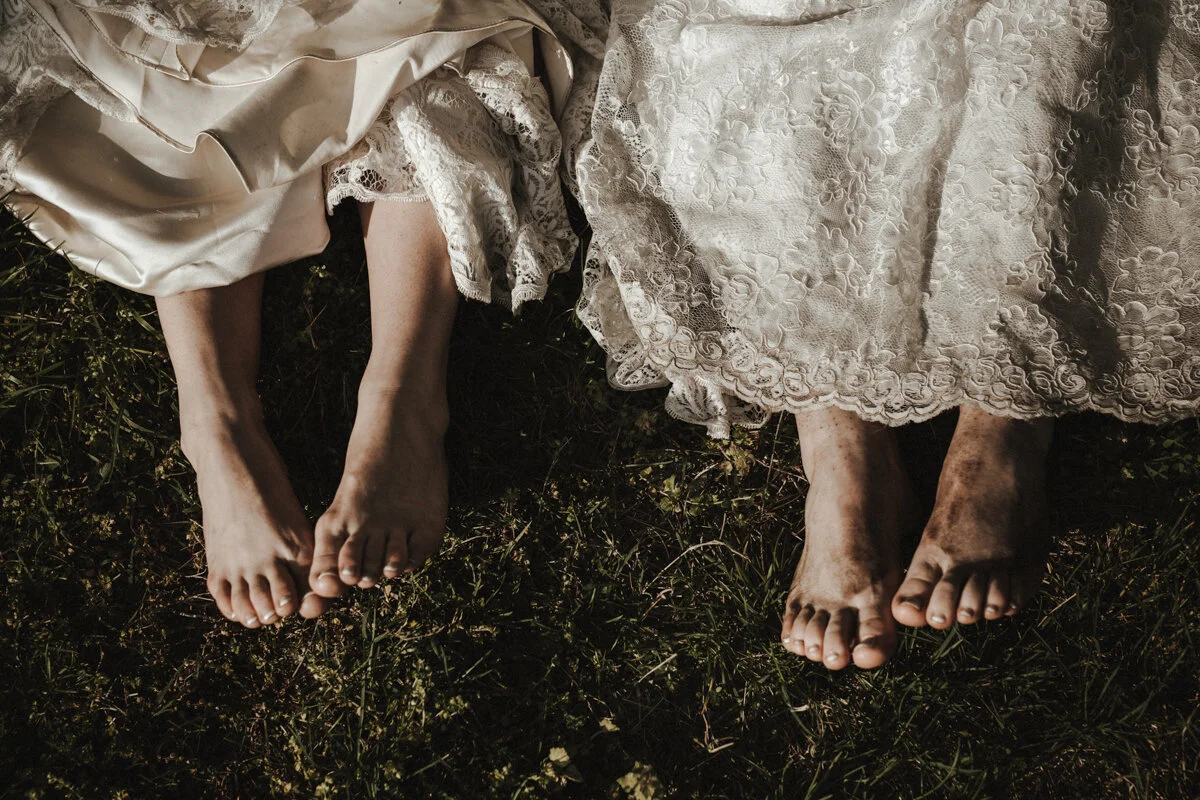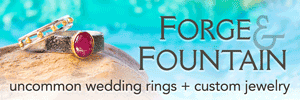20 Simple Ways to Have a Green Eco-Friendly Wedding
/This post contains affiliate links. Catalyst Wedding Co. may receive compensation or products from companies linked to or mentioned in this article. This helps support our site.
It’s no secret that weddings generate a huge amount of waste. With the pressure to have the perfect picturesque day comes the impulse to buy lots of items to make your wedding more beautiful. Unfortunately, all of our wedding waste is contributing to larger issues, like growing landfills and higher carbon emissions.
If you care about our planet, then here are just a few things you can do to cut down on waste during your wedding day.
1. Buy Ethical Wedding Rings
Before you say “I Do,” you’re likely to have already said “Yes!” to at least one engagement ring and a pair of wedding bands. Diamond and gemstone mining and the use of precious metals means that wedding jewelry has a long negative history for our planet and laborers. That’s why choosing ethical and eco-friendly wedding jewelry should be the first green decision you make for your wedding day.
Thankfully, we’ve got quite a few ethical wedding jewelers to choose from in our directory. All of our jewelers do their best to use recycled or conflict-free diamonds and recycled metals, and many, like Aide-mémoire Jewelry and Clean Origin are leading the way with lab-grown diamonds. Lab-grown diamonds are equal to mined diamonds in every way, and have a much smaller social and environmental impact. Bonus, lab-grown diamonds tend to be less expensive than their mined counterparts.
2. Avoid Single Use Papers and Plastics for Dishes and Utensils
We see this a lot, especially when it comes to DIY or budget weddings. You want something simple and easy, and you think it will be more cost efficient to use single use papers and plastics for your dishes, cups, or utensils, but don’t forget all of those items are likely to end up in the landfill.
“Be sure to request sustainable, compostable, or reusable dish ware and paper goods from your catering company,” says Norfolk, Virginia wedding photographer Tyler Adams of The Girl Tyler. “Something as simple as cutting plastic straws and choosing eco-friendly alternatives can make a big impact.” But don’t forget to keep some plastic straws available, as ditching them completely may alienate some of your guests.
3. Rent Dishes and Linens
“Using linens and dishes versus disposable goods (especially plastic) for pre- and post-wedding events, like showers and brunches, is another smart way to be sustainable,” says Connecticut wedding photographer Teresa Johnson, but we know that most people don’t have enough linens or dishes to account for all of their guests. That’s why renting these items is usually the best way to go, and be sure to ask your rental company about what cleaning processes they use, as some can be more harmful to the environment than others.
4. Donate or Compost Your Flowers and Food Waste
Food and flower waste makes up for a large amount of trash on wedding days, and often, it ends up in a landfill when it very easily could be composted or donated. Talk to your caterer about what happens to your food waste after the wedding, and make sure there is a plan in place to either donate or compost left over food.
The same goes for your flowers. If you have bouquets and centerpieces on every table, then that’s a lot of flowers that will simply go to waste at the end of the day unless you have a plan for them. They can either be composted along with your food waste, or you can donate them. Organizations like Random Acts of Flowers coordinate donations of flowers and vases to people in health care facilities. Let your wedding flowers live on by providing joy for someone else.
5. Choose Caterers That Support Local Farmers
“It’s important to find caterers that not only compost, but source their food from sustainable sources,” says Buffalo, New York wedding photographer Jacqueline Connor, and we couldn’t agree more. Eating local is important all the time, as the carbon emissions involved with shipping food across the country or across the globe has a very negative impact on our environment. Work with caterers who source their food locally, and be thoughtful of only choosing foods that are actually in season at the time of your wedding.
6. Choose Potted Plants & Succulents for Decor
Jacqueline also wants to remind couples that your flowers should be local, too! “Find locally sourced flowers that are sustainably grown, or skip them entirely. If you want the flower look without the waste, try potted plants that can live afterwards. They can double as a favor, too!” I did this at my own wedding, and it was a big hit! A number of my friends still have our wedding day succulents in their homes four years later.
7. Buy Wedding Invitations from Eco-Conscious Brands
Save the Dates, engagement announcements, wedding invitations, and RSVP cards are another source of waste when it comes to weddings, but that doesn’t mean you need to ditch paper goods outright! There are many eco-conscious stationery brands out there, like Ephemora, that do everything they can to reduce their impact on the environment while still providing you with stunning paper goods.
“Seek out invitation companies that prioritize minimizing environmental impact,” says Ephemora co-owner Molly Cichy. “This looks like using post-consumer recycled paper or paper made from properly managed forests, using eco-friendly print methods like digital printing, shipping using carbon offset credits, and printing locally to minimize the waste of shipping. I literally bike to the print shop to pick up our customers' orders.”
8. Print Your Invitations on Plantable Paper
If you’re choosing to print your own wedding invitations at home, then you have other options for how to make them more eco-friendly. “You can think about stationery made from plantable paper,” says Teresa Johnson. “There are lots of beautiful options out there!” Paper Source now offers seeded paper, so you can buy high quality card stock and print your plantable wedding invitations at home!
9. Or Skip Paper Wedding Invitations Entirely
If you aren’t quite as paper obsessed as me (former stationery shop girl over here), then you can also choose to go entirely digital with your invitations. Paperless Post has partnered with Paper Source so that you can pick and choose which parts of your wedding paper goods you want to be digital and which you want printed. It also allows you to have a keepsake printed invitation even if you don’t send out paper ones to your guests. Other sites like Greenvelope offer similar services.
10. Look For Sustainable Wedding Attire Designers
“Fast fashion is a huge contributor to pollution and water use,” says Jacqueline Connor. “Look for local, sustainable designers for wedding attire to reduce your impact.”
There are dozens of wedding attire designers out there that are incredibly thoughtful about their process, and choosing a designer like Silviyana can be a great choice. Silviyana is a fair trade, eco-friendly independent wedding line and many of their dresses are made from pineapple leaves! Yes, you heard me right!
11. Wear a Secondhand or Vintage Wedding Dress
Wearing secondhand or vintage means you are giving a pre-loved wedding dress a second life. Brides for a Cause collects donations from individuals, bridal shops, and designers and has a large database of donated and pre-loved wedding dresses to choose from. Not only are the prices much lower than your typical boutique, but Brides for a Cause donates a portion of their proceeds to a number of charities. Shop online or check out their Seattle, Tacoma, and Portland locations in the Pacific Northwest.
And if you are a vintage lover, then I don’t need to tell you that Etsy is full of vintage wedding dresses just waiting to go home with you!
12. Cut Down on Transportation Needs to and from Your Wedding
“Transportation is one thing that people don’t always think about,” says Philadelphia wedding planner Natalie Diener. “Having a wedding in a location where the majority of guests have to fly to attend, or splitting the ceremony and reception into two different locations where car or bus travel between the two is necessary impacts the overall carbon footprint of the wedding.” To avoid this, try to have your ceremony and reception in the same place, or make sure your guests carpool from point A to point B!
13. Register for Non-Tangible Items
I won’t lie, I went a little off the rails with our wedding registry. Once I got that scanner in my hand, it became an endless stream of “OOOH I want that!” and I didn’t give enough thought to what a negative impact that was having on the environment or whether I really needed all of this STUFF. I especially didn’t think about the shipping and packaging.
“Every time a family member sends you that blender you registered for it’s packaged in heaps of plastic packing material that goes straight in the trash,” reminds Natalie Diener. “Registering for non-tangible goods, like gift cards or honeymoon experiences cuts down on packaging waste.” Creating a Honeyfund registry makes it incredibly easy to receive gift cards and money for airfare, hotels, restaurants, and experiences that make your honeymoon more memorable and affordable.
14. Reuse Decor Elements Throughout the Wedding Day
Stop thinking that every piece of your wedding decor only has one use. “Reuse decor items during the event to reduce waste and save money,” says New York City wedding planner Meg Hotchkiss of LVR Events. “Ceremony backdrop? Turn it into a photo booth backdrop. Wedding party bouquets can become bar arrangements or food station or cake table decor.” Try to find a second use for every decor item you add to your wedding decor list.
15. Choose Wedding Decor Items You’ll Actually Want in Your Home
Don’t forget! You can also bring part of your wedding home with you. “Think about decor that can be reused,” says Teresa Johnson. “One of my clients chose locally-grown flowers in glass bottles that she sourced from local yard sales and flea markets. It created a beautiful look that she later repurposed to decorate her home. This not only eliminated waste but also reduced the overall carbon footprint of the wedding.”
16. Provide Guests With a Single Glass for Beverages
Giving guests a new glass every time they come up to the bar is a good practice to keep things sanitary, but it does lead to a whole lot more dishes to wash. That’s why we suggest providing each guest with a glass that they have to keep track of throughout the wedding reception. You can also customize the glass and it can become a favor for your guests!
17. Choose Kegs Over Bottles at the Bar
The bar is full of waste, not just from excessive glassware use, but also if you’re serving any beers or beverages that come in individual cans or bottles. Those sparkling rose cans are cute, but cut down on packaging by always sticking to full bottles. When it comes to beer, choose kegs over bottles, but Tyler Adams wants you to remember to check with your venue first to make sure they can accommodate that!
18. Cut Out the Balloons and Floating Lanterns
Balloon installations are having a moment, and while they are stunning, it’s important to remember that balloons can be harmful for the environment, and the same goes for all those floating lanterns. “Balloons are not biodegradable and some poor animal could potentially swallow them,” reminds Richmond, Virginia wedding planner Jonelle McCleod of Bryck and Lace Weddings. “Also, as much as I love floating lanterns, they can also pose a fire hazard to your guests, can damage animals, and can land in some forested area and potentially cause forest fires.”
19. Ditch the Sparklers and Opt for Biodegradable Confetti
“Nix the end of reception exit,” says Tyler Adams. “They always seem to involve non-eco friendly items that end up in landfills, like glow sticks and sparklers. Consider a post-ceremony exit instead, maybe with birdseed or biodegradable confetti.“
Learn More About Why Sparklers Need to Go
Find Our Full List of Biodegradable Confetti Options
20. Only Invest in Favors People Will Take and Use
Wedding favors are always a nice gesture for your guests, but as Australia wedding celebrant Josh Withers notes, “Most weddings I leave seeing all the wedding favours sitting there going to waste.” That’s why we recommend that you get creative with your favors!
“The best favors I've seen have been small plants or seed packets,” says Los Angeles wedding photographer Rebecca Aranda of Rebecca y Las Otras. “If guests remember to take them home, it's awesome, but whatever is left behind can be collected by the couple and used to start a little garden!”
JEN SIOMACCO
Jen Siomacco is the CEO and Editor-in-Chief of Catalyst Wedding Co. She works to mesh together her love of feminism, love stories, accessibility, equality, and design into the Catalyst brand. When she’s not traveling the country working to make the wedding industry a more inclusive place, she’s writing on her couch and snuggled up with her husband and SUPER lazy cats.
Photo by Tiffany Josephs Photography



























